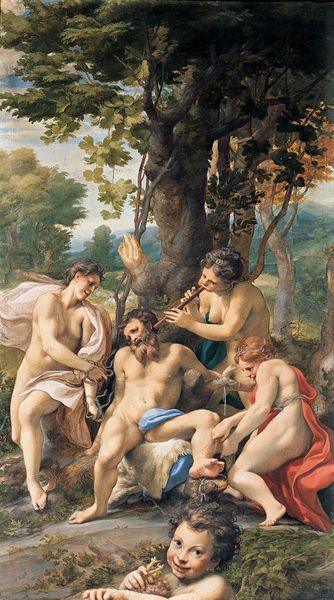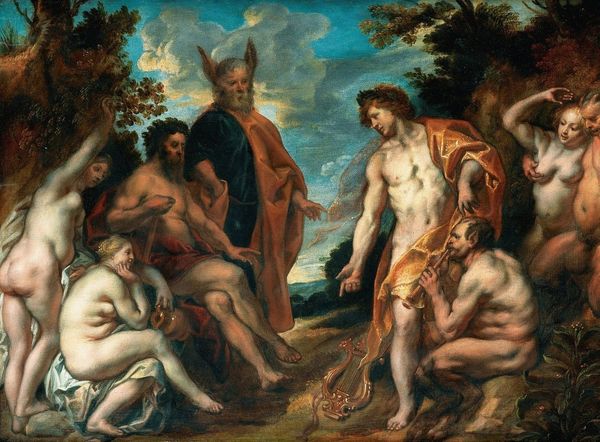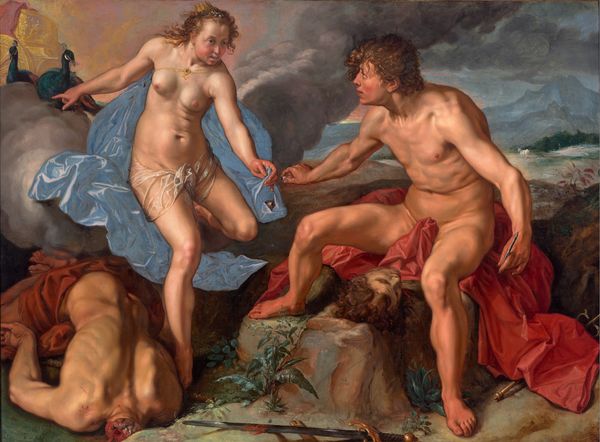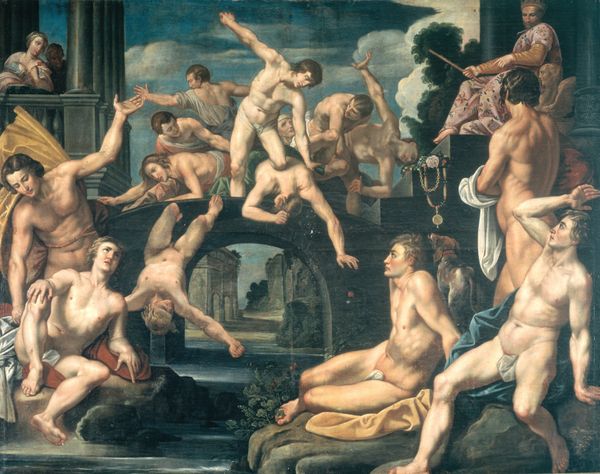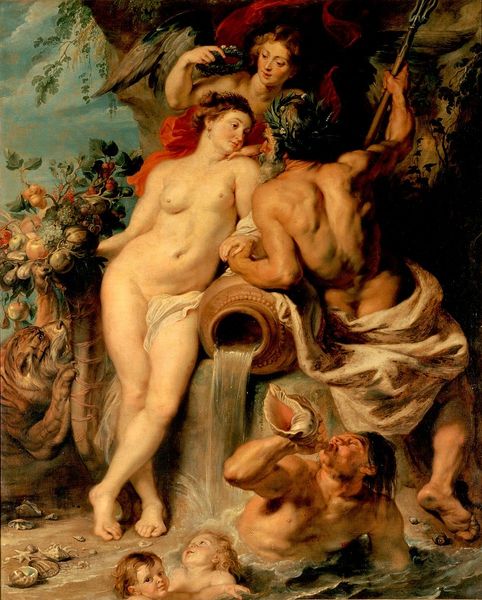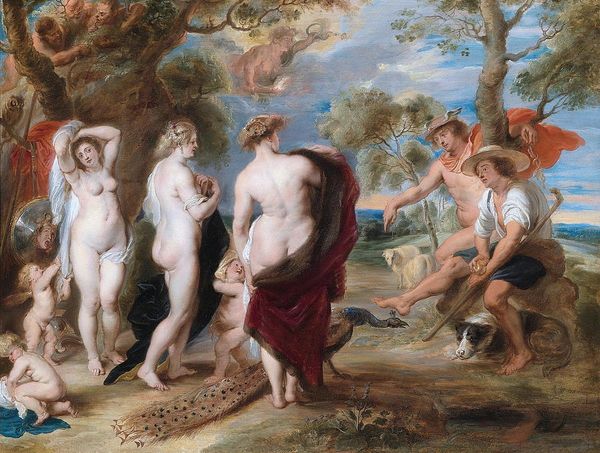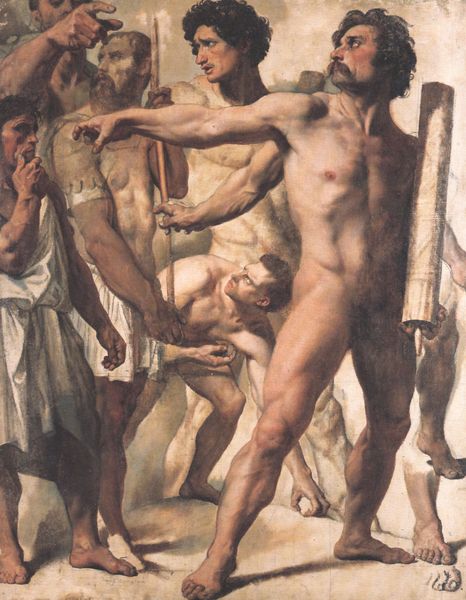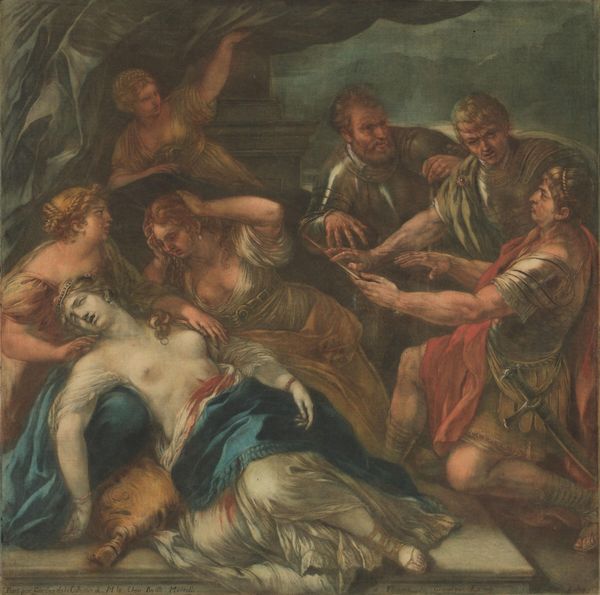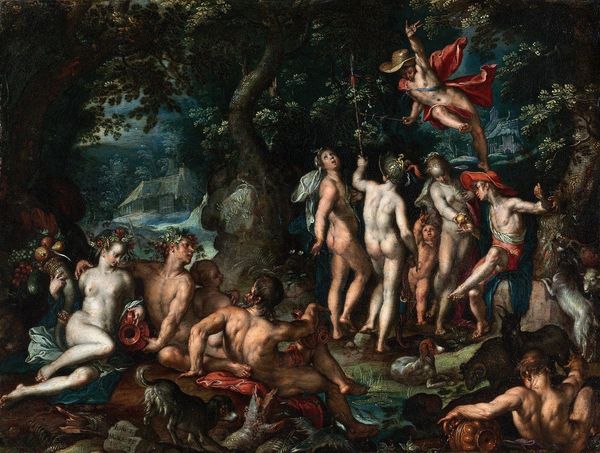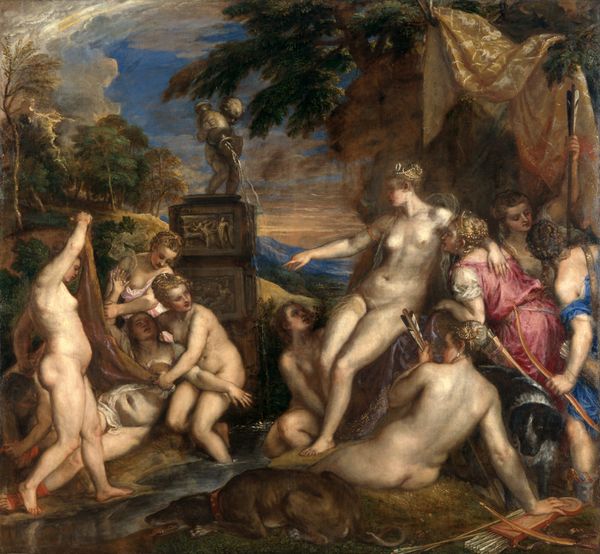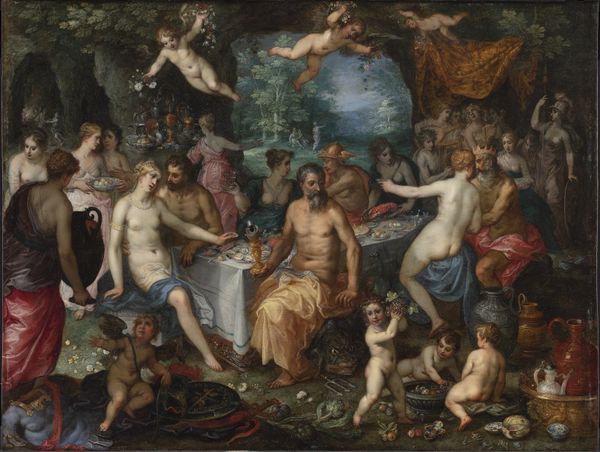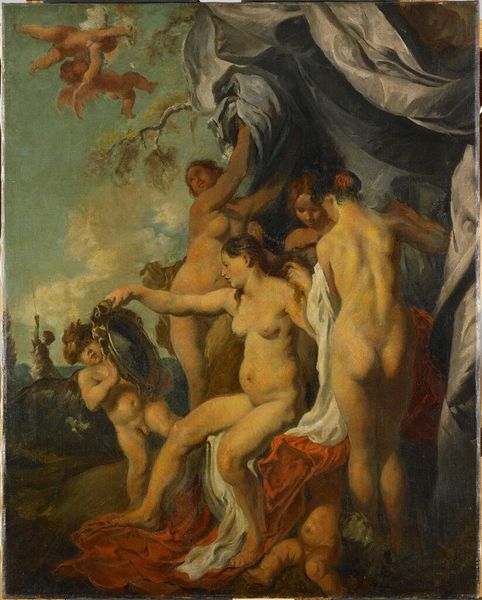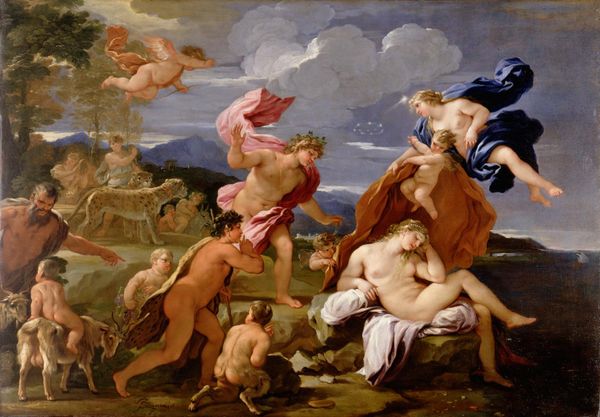
Allegory of Abundance 1623
0:00
0:00
jacobjordaens
Royal Museums of Fine Arts of Belgium, Brussels, Belgium
painting, oil-paint
#
allegories
#
allegory
#
baroque
#
painting
#
oil-paint
#
figuration
#
oil painting
#
female-nude
#
flemish
#
mythology
#
history-painting
#
nude
Dimensions: 180 x 241 cm
Copyright: Public domain
Curator: Alright, let's turn our attention to this exuberant canvas by Jacob Jordaens. Painted in 1623, "Allegory of Abundance," we see a riot of figures overflowing with life, rendered in oil on canvas, now residing here at the Royal Museums of Fine Arts of Belgium. Editor: My first impression? Overflowing is the word! A celebration of fleshy forms and earthly delights. It feels…almost overwhelming in its opulence, but with a slight air of staged artificiality that keeps me at a distance. Curator: "Staged artificiality"—interesting! The very nature of allegory is theatrical. But consider the Baroque context. Jordaens, following in Rubens's footsteps, used classical and mythological imagery to convey complex ideas. Here, abundance isn't merely material wealth but perhaps also fertility, peace, and prosperity, tied together through agriculture. Look at that cascading array of fruits and vegetables. Editor: Indeed, the sheer labor involved in cultivating and gathering that abundance. And what about the pigment? Where were these colors sourced from, what processes created these vibrant tones, and who benefited from their extraction? It invites reflection on colonial supply chains, trade networks, and access to global materials, doesn't it? Curator: You're bringing a very modern lens to bear, focusing on the materiality itself. Jordaens, as a master of the Flemish Baroque, likely understood those economic and social aspects, though his primary goal would've been communicating the symbolic narrative to his patrons, don't you think? The way light drapes across the figures, almost tangible, emphasizing the vitality of the forms. Notice how everyone is interacting—even that inebriated man at the right side and chubby children collecting the grapes seem to represent nature's bounty. Editor: That drunk, however, embodies more than festivity: excessive drinking, waste, unproductivity are the sides of "abundance" no one shows; someone surely produced those drinks but cannot drink them. He almost seems out of place. And those bodies... idealized forms, yes, but undeniably human, and undoubtedly labor-intensive! I'm always intrigued by paintings of this scale because it means the artist was a brand of sorts employing teams of apprentices and various other individuals in the studio to create this product together. Curator: You're right to push against a solely aesthetic interpretation. Even those seemingly joyous gatherings could hint at societal power dynamics. Editor: So, abundance isn’t a pure celebration, but rather a complex statement laden with implications about labor, resources, and systems of support… not very different than the ones surrounding museums such as this today. Curator: Indeed, art provides always an excellent mirror for self-reflection, past and present.
Comments
No comments
Be the first to comment and join the conversation on the ultimate creative platform.
